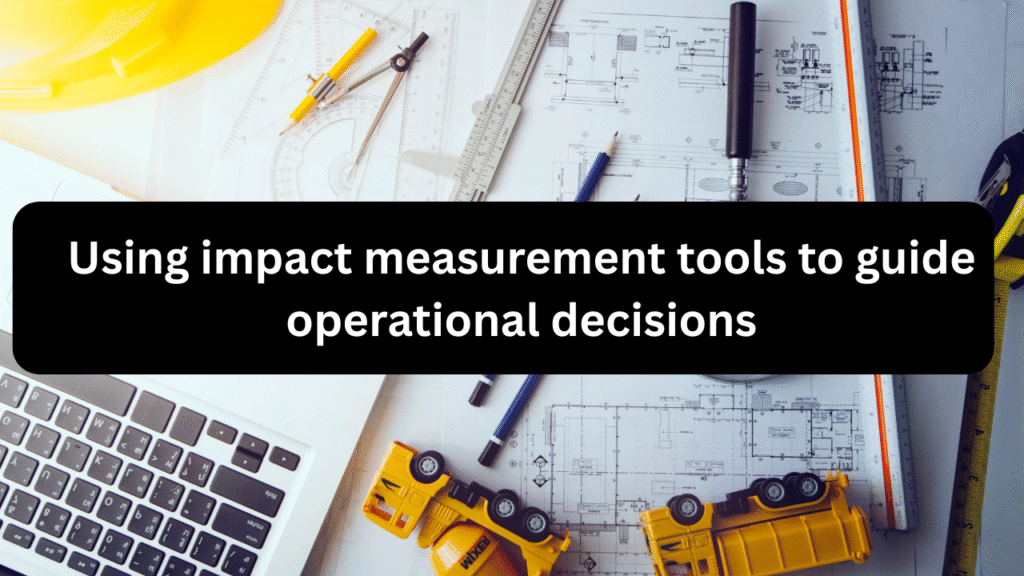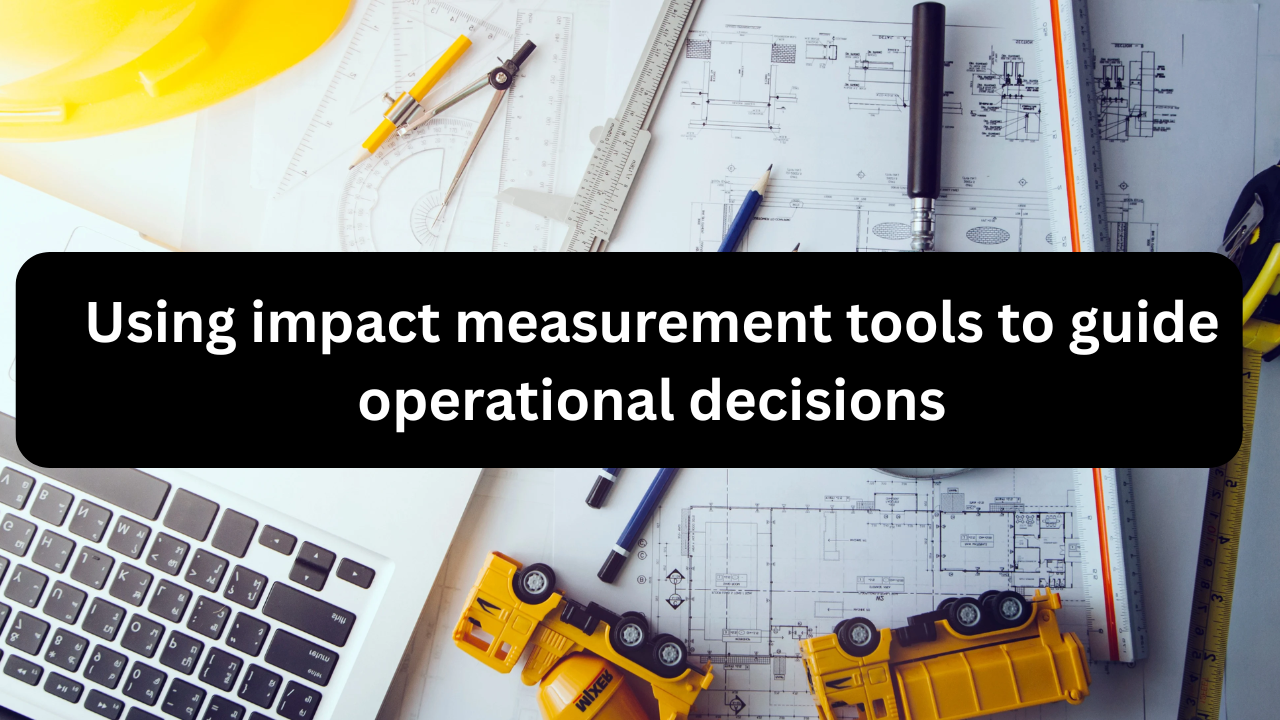
Purpose-led organizations—from NGOs and social enterprises to design-based charities—face increasing pressure to demonstrate measurable impact. But impact measurement isn’t just about reporting to funders or attracting donors. When used strategically, it becomes a powerful decision-making tool that can enhance operations, improve efficiency, and boost mission outcomes.
This article explores how organizations can integrate impact measurement tools into their operational systems to make smarter, data-driven decisions. It covers methods, tools, real-time applications, and how to balance qualitative and quantitative data.
Overview Table: Integrating Impact Measurement into Operations
| Element | Function in Operations |
|---|---|
| Theory of Change | Guides program design and resource alignment |
| KPIs and Metrics | Tracks performance and benchmarks improvements |
| Data Dashboards | Enables real-time monitoring and quick pivots |
| Feedback Loops | Incorporates user/beneficiary input into services |
| Social Return on Investment | Assesses value generated per dollar spent |
| Outcome Mapping & Evaluation | Measures behavioral or systemic changes |
1. Why Use Impact Tools for Operational Decisions?
Operational decisions—such as where to allocate resources, how to improve efficiency, or when to pivot strategy—should not rely on intuition alone. Impact measurement tools:
- Provide objective evidence of what’s working or failing.
- Help prioritize high-impact areas over low-value efforts.
- Justify spending to funders and boards.
- Align daily decisions with long-term mission goals.
Whether you’re deploying a new community design project or optimizing volunteer programs, impact data grounds your operations in purpose and performance.
2. Key Impact Measurement Tools
Here are the most widely used tools that help organizations tie operational choices to measurable outcomes:
| Tool | Purpose | When to Use It |
|---|---|---|
| Theory of Change (ToC) | Visualizes how activities lead to outcomes | During program or project planning |
| Logical Framework (Logframe) | Defines inputs, outputs, outcomes, impact | For planning and M&E integration |
| Key Performance Indicators (KPIs) | Quantifiable metrics of progress | In regular performance tracking |
| SROI (Social Return on Investment) | Monetizes social/environmental impact | During evaluations and fundraising |
| Data Dashboards | Visual tools for real-time decision-making | For team alignment and rapid response |
| Outcome Harvesting | Captures evidence of unintended results | When working in complex or shifting contexts |
3. Embedding Impact Measurement into Operations
Impact tools should be embedded directly into processes—not treated as afterthoughts.
A. Strategy and Planning
- Begin with a Theory of Change to clarify how your design work leads to social benefit.
- Use KPIs aligned with impact goals during project design and budget allocation.
B. Monitoring and Feedback
- Use dashboards (e.g., Power BI, Google Data Studio, ImpactMapper) to track performance indicators like community satisfaction or carbon reduction.
- Install continuous feedback loops from beneficiaries and stakeholders.
C. Course Corrections
- If a program underperforms (e.g., fewer beneficiaries reached or lower-than-expected satisfaction scores), data will alert you in time to redirect efforts.
- For example, if a public space redesign sees low usage, survey data can reveal whether the issue lies in access, safety, or aesthetics.
4. Balancing Quantitative and Qualitative Data
Not all impact is numbers. Combine:
- Quantitative Metrics: Number of trees planted, households served, emissions reduced.
- Qualitative Insights: Stories, testimonials, visual evidence of environmental or social change.
Use tools like:
- Most Significant Change (MSC) for narrative tracking.
- Focus groups/interviews to understand lived experiences.
- GIS mapping for visualizing geographical reach.
This balance ensures that operational changes are not only based on what you can measure, but also on what truly matters to your community.
5. Challenges and Solutions
| Challenge | Solution |
|---|---|
| Data Overload | Prioritize 5-7 meaningful KPIs |
| Limited Staff Capacity | Automate data collection with simple tools |
| Resistance to Change | Demonstrate quick wins from data-informed actions |
| Measuring Long-Term Impact | Use proxy indicators and milestone tracking |
| Attribution of Impact | Combine contribution analysis with field data |
6. Real-World Example: Design-Based NGO
A design-focused NGO aimed to revitalize unused urban lots. After embedding KPIs into its operations—like public engagement rates, foot traffic post-intervention, and air quality improvements—it realized that engagement was lower in low-income neighborhoods.
Operational Shift Made:
They adjusted outreach strategies (e.g., multi-lingual flyers, local ambassadors), leading to a 45% increase in community participation.
Impact measurement not only identified the issue, but directly shaped how operations evolved on the ground.
3 Best One-Line FAQs
1. What is the first step in applying impact measurement to operations?
Start with a Theory of Change to align your goals with measurable activities and expected outcomes.
2. Can small NGOs use impact tools without big budgets?
Yes, low-cost tools like Google Forms, Excel dashboards, and open-source M&E templates are effective.
3. What’s the main benefit of using impact data for decision-making?
It reduces guesswork and ensures every action contributes to mission outcomes.
Conclusion
For mission-driven organizations, impact measurement is no longer a luxury—it’s a strategic imperative. When integrated with daily operations, these tools enable better resource allocation, faster adjustments, and deeper engagement with communities and stakeholders. The result? Stronger programs, higher accountability, and a greater return on every effort made. Whether you’re designing playgrounds, sustainable housing, or public art, let data be your compass.

